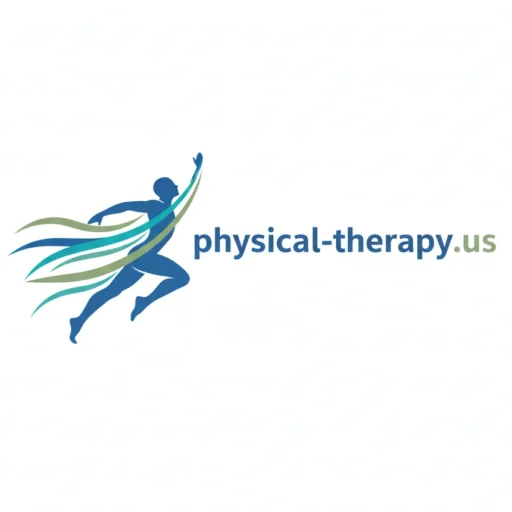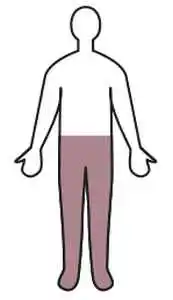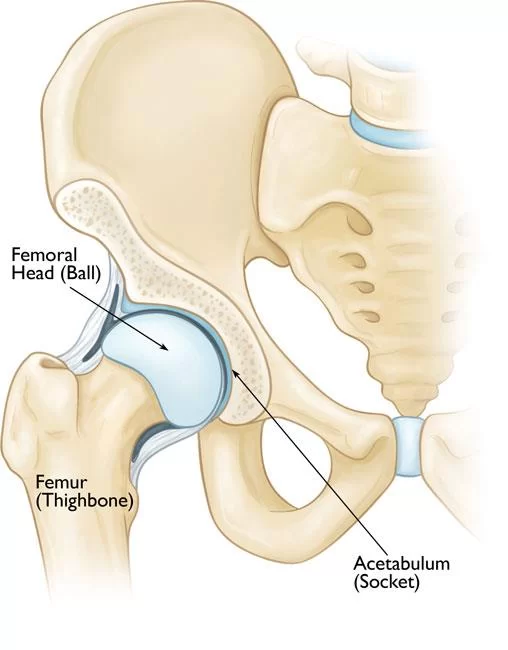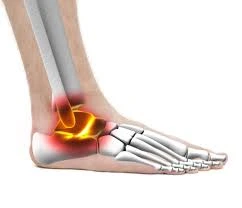How to Sleep in Neck Pain?
Introduction:
Neck pain might make it very difficult to fall asleep. Neck pain frequently gets worse at night, making it difficult to get a good night’s sleep, regardless of the cause—poor posture, an injury, or prolonged desk work. Finding the ideal cushion, sleeping position, and nightly schedule can have a significant impact. We’ll look at practical ways to improve your quality of sleep and reduce pain when you wake up in this article.
The issue with sleeping on your stomach is that it exerts pressure on your nerves since you have to twist your neck to keep your head on its side. By utilizing pillows to support and encourage you to lie on your side or back, you can attempt to retrain yourself to choose a different position.
Additionally, improper sleeping might cause neck pain. You may experience a neck ache when you wake up. Neck pain may be caused by an uncomfortable sleeping position, abrupt head or neck movements while you’re asleep, or neck strain following an injury. Along with using therapies to alleviate this neck pain, make sure you use a supportive pillow for your neck when you sleep in the future.
Having a sore, stiff neck might make it difficult to sleep. Additionally, some sleeping positions may aggravate neck pain or be a contributing factor. You can improve your quality of sleep by being aware of the ideal sleeping positions for neck pain. Additionally, it might speed up your recovery and avoid chronic pain.
Causes of neck pain:
When you sleep, you might not think much about how you arrange your body or what kind of pillow you use.
Up to 5% of new cases of chronic pain may be caused by sleep issues, according to research. You may be able to reduce your neck pain and other types of pain by making certain modifications because many of these factors are under your control.
Your sleeping position:
Everybody has a favored way of sleeping. Your back may also be strained by stomach sleeping, particularly if you’re using a mattress that doesn’t provide much support.
You slept with too many pillows:
A healthy, pain-free neck is mostly dependent on the type of pillow you choose because your head and neck spend a lot of time on it each night. A neutral neck and spine can be achieved at night by “cradling” your head with feather or memory-foam pillows.
Muscle strain:
Your neck may be awkwardly positioned when you sleep, putting tension on your muscles. Muscle tension is another consequence of using the incorrect cushion. Regardless of whether the pillow is made of feathers or memory foam, ensure it is not too high or too low. It should maintain your head in a neutral or straight position and help to support your neck’s natural contours.
Last but not least, slouching at the computer or other bad posture during the day might result in muscular strains that cause neck pain at night.
Stress:
People who experience stress and worry may maintain tense muscles during the day and at night. Painful shoulder and neck muscular spasms and knots may be the outcome of that strain. Additionally, it might make your neck stiff and hurt when you sleep.
You used the wrong kind of pillows to sleep with:
Different kinds of support are offered by various pillows. It all comes down to neck alignment. You’ll probably wake up with a stiff neck if your neck is twisted as you sleep.
Age-related changes:
Age-related musculoskeletal issues might impact your neck due to wear and strain on your spine. Pinched nerves, osteoarthritis, and herniated discs are a few examples. When the gaps in your spine contract, pressure is placed on the nearby nerves, causing this. Sleep-related neck pain can be caused by any of these diseases.
Sudden movement:
Muscle strains in the neck can result from abrupt movements, such as tossing your limbs around in a dream or sitting up fast.
Previous injury:
Sports injuries and whiplash are two examples of conditions that may not necessarily cause pain right away. It can take a few days to experience the full physical benefits. If you had an injury that could have affected your neck, you might feel OK when you go to bed, but wake up the following morning with an extremely sore and stiff neck.
Lack of sleep:
Neck pain could potentially result from inadequate sleep. Also, your neck ache at night may prevent you from getting adequate sleep. It may lead to a vicious cycle. Find out what’s causing your neck pain at night so you can improve your sleep, whether it’s your sleeping posture or something else.
You slept in a funny position:
You can lie on your stomach, on your back, or curled into a tight ball. A person’s sleeping position might vary greatly. For example, lying on your stomach means your neck is twisted to one side for hours at a time, which is likely to result in a stiff neck.
Cervical Osteoarthritis:
The degeneration of the cartilage that cushions the bones in your joints is known as osteoarthritis, and it causes stiffness, pain, and a restricted range of motion. Osteoarthritis in the cervical spine, or neck, is a possibility. Many times, after hours of inactivity, the first half hour after waking up is when osteoarthritis symptoms are most noticeable. This is one explanation for why your neck could be tight when you wake up.
Best sleeping position for neck pain:
Your sleeping position has a significant impact on the quality of your sleep. Compared to sleeping on your stomach, both of them are less taxing on your spine.
Since your preferred sleeping position is frequently established early in life, it could be challenging to switch. But as you become used to the new role, you’ll feel more at ease over time.
Having extra pillows around will help you stay comfortable even if you shift during the night, as most people move about a lot.
Sleeping on your back:
The natural contours of your spine are preserved while you sleep on your back. To keep your head at the same angle as when you’re standing, you should only slightly lift it. You might want to try sleeping on your side rather than your back if you have sleep apnea or snore frequently.
Sleeping on your side:
 Sleeping on your side
Sleeping on your side
One of the greatest methods to maintain a neutral head position with your chin facing forward is to sleep on your side. A cushion that is high enough to maintain a neutral neck but not so high that your upper ear is pushed toward your shoulder is a suitable choice for sleeping in this position.
Sleeping Upright:
 Sleeping Upright
Sleeping Upright
In many cases, sleeping upright or in a recliner helps patients with neck and back problems. The greatest accessory for this position is a neck-supporting pillow in the shape of a horseshoe, like those used on airplanes. Also, a wonderful idea is lower back pillows.
Avoid sleeping on your stomach:
For hours at a time, your head is pushed to one side in this position. This misalignment may cause your neck to be overworked.
Pain-free Sleep Extras:
Take the time to choose the ideal tools and setting for your ideal sleep, in addition to sleeping postures. To achieve a comfortable resting position, pillows can be used creatively. Get new pillows if your current ones are outdated and unsuitable. Additionally, you might need to test out several models to determine which one works best for you.
This also applies to mattresses. Is it time for a replacement? Similar to pillows, there is no one ideal mattress option. Despite advice to the contrary, what works for one individual may not work for another. Once more, attempt to evaluate a mattress by sleeping on it—in a hotel, on a friend’s guest bed, or any other location that is possible.
Contact Edison Spine Center to schedule an appointment if you are suffering from neck or back pain. We can diagnose the issue and provide you with the necessary tools to remedy it.
Best way to sleep with neck pain:
Three arches are naturally present in your spine. Reducing neck or back pain can be achieved by arranging your bed to best preserve these natural contours.
Using memory foam is a common way for people to manage their neck problems. A pillow with cervical support or a soft feather pillow that conforms to your head are other options.
Sleeping on your back:
- Make use of a thin pillow: With a small forward curve, a thin cushion allows you to maintain the natural position of your upper spine.
- Consider using a cervical pillow: A cervical pillow maintains your head and neck in a neutral position by supporting them.
- Make use of a supportive mattress: You can discover that your back rounds and you sink into your mattress if it’s too soft.
When you’re sleeping on your side:
- Don’t use pillows that are too high: The height of your pillow should ideally maintain your ears stacked vertically above one another.
- Your head is positioned forward when your chin is tucked in.
Tips to help you relieve neck pain after sleeping:
Finding the source of your neck pain and making adjustments to treat it are crucial if it is persistent or recurrent. Think about these suggestions to enhance the quality of your sleep.
- Change out your old pillows and mattress. When your mattress begins to droop or get uncomfortable, or every 6 to 8 years, it’s a good idea to replace it. According to studies, a medium-firm mattress may help improve sleep quality and spinal alignment.
- Apply either a hot or cold compress. The first 48 to 72 hours after an accident are the most beneficial times for cold therapy to reduce inflammation. Warm compresses or heated pads aid in promoting blood flow and easing tense or spasmy muscles.
- Change your workspace. If you work at a desk, make sure your workspace is arranged correctly to maintain the alignment of your neck, spine, and head. Maintaining proper posture and preventing aches and pains can be achieved by positioning your desk and computer at the ideal height while seated in a supportive chair.
- Do focused workouts and mild stretches. Throughout the day, move around by taking breaks. Additionally, stretch your neck gently so that it moves through its whole range of motion, including circles, up and down, and side to side. This can help you avoid knots by keeping your neck muscles relaxed.
- Try techniques that reduce stress. Include methods for alleviating stress in your daily activities. You can reduce everyday stress by scheduling a massage, doing yoga, or meditating. Listening to your favorite music or taking a stroll in the outdoors are two other ways to de-stress. If you need more assistance controlling your stress, think about speaking with a therapist.
- As needed, take painkillers. You can discuss prescription painkillers with your healthcare professional as well.
- Examine physical treatment. A physical therapist can assess your posture and suggest exercises to improve your muscles if you have any abnormalities. To lessen pain and encourage healing, they might also use a variety of methods. Additionally beneficial is hands-on therapy, such as massage and trigger point release.
Conclusion:
While sleeping with neck pain might be difficult, it can be greatly improved by using a supportive pillow, sleeping in the proper position, and maintaining proper posture. Maintaining the alignment of your neck and spine is crucial, regardless of whether you sleep on your side or back.
Make little changes to your sleeping environment and refrain from sleeping on your stomach to encourage comfort and recovery. Over time, neck pain can be lessened and sleep quality can be enhanced with the right attention and persistence.
FAQs:
Can neck pain be relieved with hot water?
Indeed, using hot water to relieve neck pain can be helpful. Warm water bottles, heating pads, and warm showers are examples of heat therapy that can help alleviate stiff neck muscles, lessen pain, and improve blood flow.
What fruit is best for pain in the neck?
These meals will boost your essential antioxidant levels and give your body anti-inflammatory The following foods are excellent for reducing neck and back pain: Fruits: In particular, blueberries, strawberries, cherries, and raspberries are high in vitamins, minerals, and antioxidants that reduce inflammation.
On your side, how do you sleep?
Place a pillow between your knees to straighten your spine so that you can sleep comfortably on your side. A pillow that maintains your neck in a neutral position and your ears in line with your shoulders should be used to support your head.
What is the reason for neck pain?
Numerous disorders, such as cervical spondylosis or spinal stenosis, accidents, arthritis, and muscular strains, can cause neck pain. Other factors that might cause neck pain include bad posture, stress, and even specific medical problems.
Which side of the neck pains the most?
Periodic neck pain might not be a serious condition that warrants a visit to the emergency department. On the other hand, severe and ongoing left-sided neck pain, or pain that has no known explanation and does not subside with rest or at-home remedies, suggests a significant issue that requires medical attention.
How can I treat neck pain with a pillow?
A rolled towel, memory foam pillow, or even a cervical pillow can be beneficial. A rolled towel or a thinner pillow might be used beneath the neck of a person who sleeps on their back. A thicker pillow could be necessary for side sleepers to keep their alignment.
Which drink relieves neck pain?
Hydrate: Water consumption is crucial since it can significantly reduce back pain and headaches and migraines. Water consumption aids in avoiding dehydration.
Which pillow is best for neck pain?
Because of its unique ergonomic design and innovative pressure-relieving foam, we ultimately decided that the Tempur-Pedic Tempur-Neck Pillow was the ideal choice.
How can neck pain be massaged?
The first step in massaging neck pain is to gently push and release tension in your neck muscles using your thumbs. Focus on any regions that are especially tight or uncomfortable, and take your time exploring what feels good.
Why does nighttime make neck aches worse?
Due to a mix of sleep-related variables and the body’s natural reaction, neck pain usually gets worse at night. Increased pain and stiffness can be caused by several factors, including using an unsupportive pillow or mattress.
How can neck pain be quickly relieved?
Neck pain can be quickly relieved by applying heating pads or ice packs. You can switch between the two multiple times a day for roughly 20 minutes each for optimal effects.
How may neck pain be relieved while you sleep?
Use supporting pillows to keep your spine in a neutral position as you sleep to ease neck pain. While sleeping on your stomach should be avoided, it is generally advised to sleep on your side or back with appropriate pillow support.
References
- Yetman, D. (2020, July 28). The Best Way to Sleep with a Sore Neck. Healthline. https://www.healthline.com/health/how-to-sleep-with-neck-pain
- Mruppel. (2019, October 17). Sleeping positions for back and neck pain – Edison Spine Center. Edison Spine Center. https://edisonspinecenter.com/sleeping-positions-for-back-and-neck-pain/
- Singh, H., MD. (n.d.). Sleeping with Neck Pain: Advice from a Pain Specialist. Hospital for Special Surgery. https://www.hss.edu/article_sleeping-with-neck-pain.asp
- Roland, J. (2023, February 10). Why Are You Waking Up with Neck Pain, and What Can You Do About It? Healthline. https://www.healthline.com/health/neck-pain/waking-up-with-neck-pain
- Exercises to help neck pain. (n.d.). Iodex. https://www.iodex.co.in/health-wellness-pain/exercise-diet/get-rid-neck-pain-sleeping-wrong/







